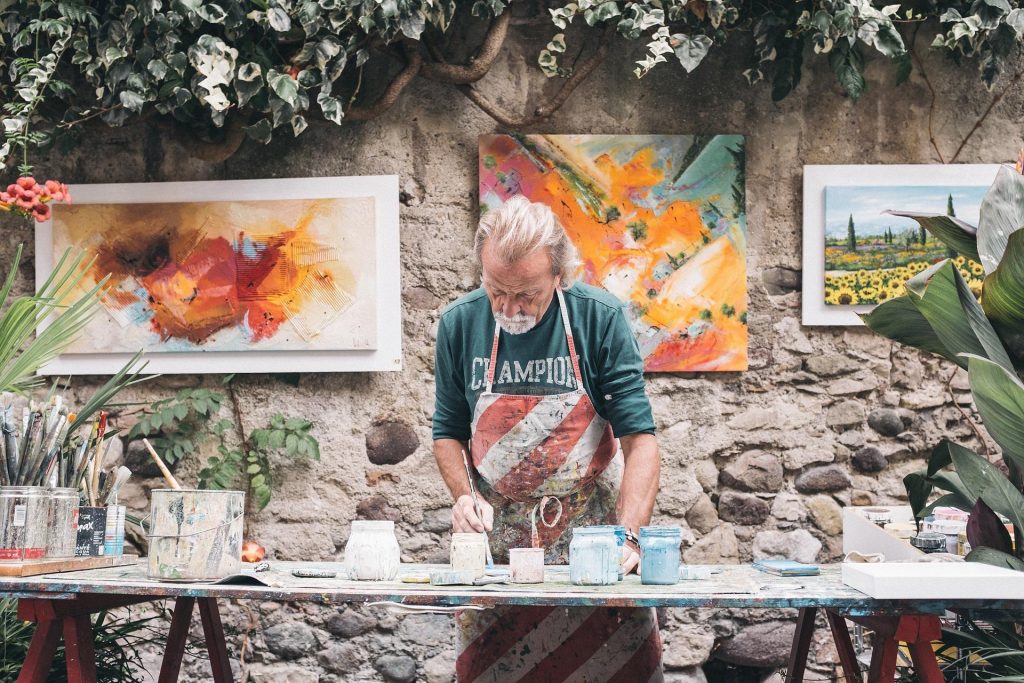At present, the competition for customers online is fiercer than ever, and no industry is exempted, not even art. Gone are the days that artists just post their artworks online, and the systems did the rest of the work. The top of the search list goes to the highest bidders, and everyone knows something about optimizing for the search engine results page(SERP).
Quick Links
Therefore, you will need to use factors such as backlinks, content length, originality, social media, and keyword to rank higher. These factors play an integral role in where search engines position your content on SERP. Generally, this is determined by relevance to the user search query and search intent. Although you need a functional website, you’ll need some work behind the scenes to take advantage of it fully.
Here are five aspects of search engine optimization specifically for artists looking for art marketing tools and tips in 2021.
1 Choose The Right Keywords
One of the most critical SEO exercises an artist can perform is to develop the right list of targeted search terms or keywords. If you can get this exercise right, you can successfully increase your rankings in search and bring in more qualified traffic – The kind of traffic that converts into loyal customers for your art. For most artists, SEO aims to maximize organic traffic cost-effectively.
Hence, you’ll have to focus on the type of wordings your prospective customers may use when searching online. You also need to remain mindful of your competition and use long-tail keywords that are niche-specific. Usually, these keywords have less overall searches. Some valuable tools for keyword research include Google Search Console, Moz Keyword Explorer, Soovle, etc.
2 Tackle On-page SEO
Image by Diggity Marketing from Pixabay
Once you’ve covered all necessary keywords, there’s the need to focus on on-page optimization that includes your webpages’ HTML source code and content. The main aspects of on-page SEO include the following:
Domain Names
Domain names play a crucial role in ranking. You need to include your target keyword in the domain name. Unless you’re a famous artist, using your name might not be the best.
Website And Page Description
Though the website and page descriptions are not visible to viewers, it’s essential for the search bots that index sites. Like the domain name, it needs to be relevant to your art and contain keywords.
Site Title And Tagline
Your art business requires some level of branding. Therefore, make the site titles and taglines remarkable and unique to catch the attention of customers.
3 Optimize Images For Search
Images aren’t meant for search bots because they don’t see them. Though Google has image-bots, they don’t appreciate pictures like the human eye does. Therefore, it’s required that you go above and beyond to provide adequate image descriptions for all your images. And, of course, your descriptions should include keywords.
You can add this vital information in the metadata embedded within the image. Some content management systems enable users to add different image information, such as alt image tags, descriptions, and captions. All these pieces of information may seem unnecessary. However, the bots use them to identify your images and understand their purpose within the rest of the content.
4 Fix Content Length And Quality
Content may be king, but your art business won’t get far with low-quality content. Top-quality, relevant, and original content is the type that makes a difference for search and ranking. Hence, your content needs to be grammatically accurate, free from all punctuation mistakes and spelling errors. Next, it has to be valuable to the reader.
Google and other search engines have become very good at detecting irrelevant content and pushing them below in the search results. Today, the bots are capable of fishing out even the smallest plagiarized lines in the content. Therefore, duplicate content is something you want to avoid at all costs. Besides these, content length is also vital in SEO because it helps bots determine what the page is about.
5 Design A Mobile Responsive Website
Image by Firmbee from Pixabay
According to Statista, more than three billion people around the world use smartphones. Websites will need to serve the growing number of mobile users on the internet, and your art business is no different. Google’s algorithm updates now prioritize mobile responsiveness as a ranking factor.
Therefore, you’ll need to choose design themes that offer a cross-platform responsive user interface. Some of the website development platforms that provide this solution include Wix, Squarespace, Format, and WordPress. If you’re using a third-party theme of any of these platforms, try and ensure that it’s intuitive and fully responsive.
Conclusion
The internet is always evolving. Therefore, SEO isn’t a problem you solve with a one-time solution. The process is continuous as you learn to pay attention to emerging technologies and best practices. You’ll need to use these to make adjustments to new and existing work to get the best results and maximize your market potential.
But most importantly, you’ll need to be patient and set realistic goals. These five methods are useful for marketing your art. However, they won’t bring you overnight success because there is no such thing in business. Instead, you can expect a gradual increase in quality traffic.

